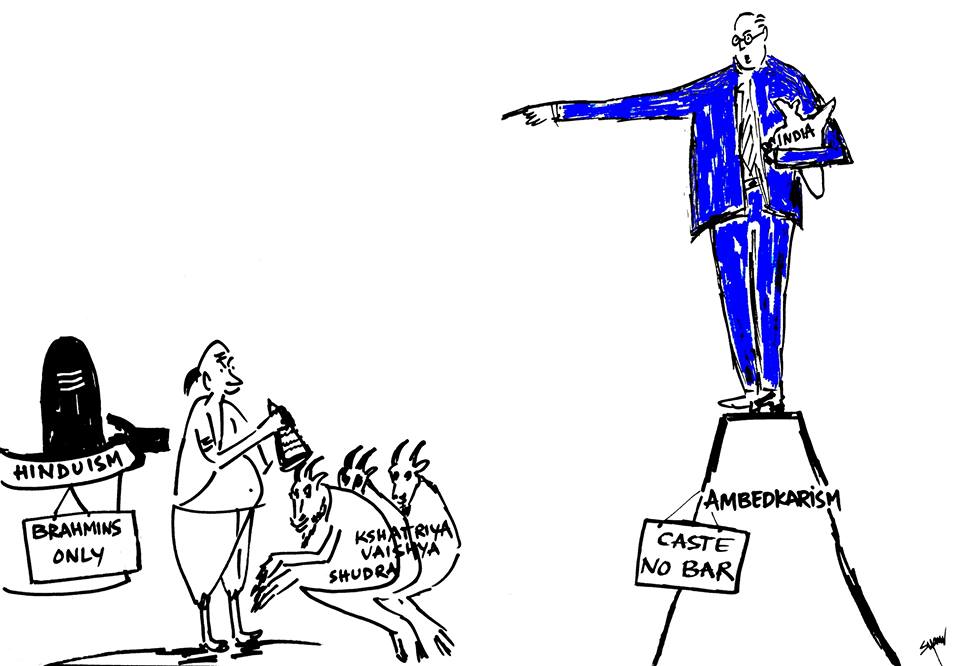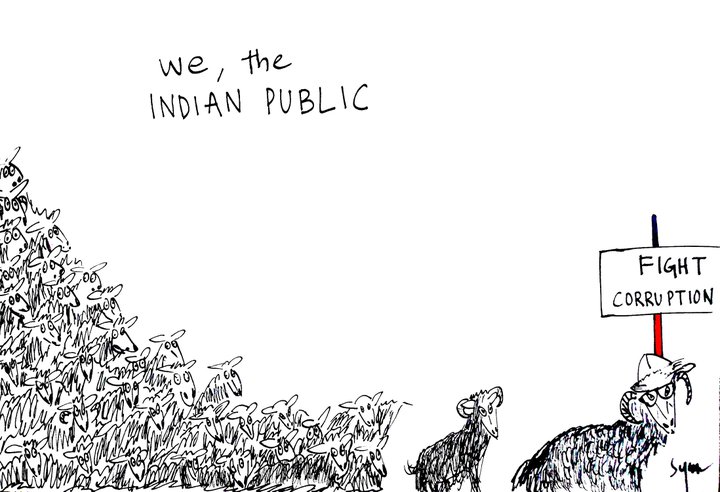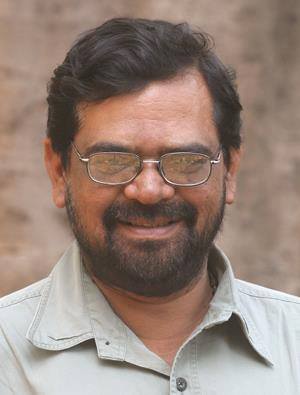Divyesh Murabiya
Nagraj Manjule, the much celebrated Marathi film director of the latest blockbuster Sairat, has much more to his credit than just this film. He started off his career with Pitsulya, a short film which won him a national award. He debuted in Marathi film industry with Fandry, which was widely (and critically) acclaimed, and fetched him national and international awards for best director. His much awaited film Sairat was released on 29th April 2016 and recorded highest collection in the Marathi film industry and crossed 65 crores by third week1 (and is still running). It is an epic love story of Parshya (Akash Thosar) and Archie (Rinku Rajguru) that tries to break free the rigid social structure of caste in Indian society.
Sairat (meaning Wild in English); a film, an emoting journey of passionate love which by the end, leaves one with so much of enduring angst and anxiousness, a film worth experiencing with all its intricacies, complexities, rather than just watching. It is a testimony of love, pain and agony of each and every custodian killing2 in the name of honor; an experience one can barely imagine oneself in.
On watching a bollywood movie, one tends to leave everything inside when leaving the theatre, but Sairat is definitely not one of that kind. Moreover, it will haunt you till you get occupied consciously or unconsciously in social realities, because the questions that the film has posed are yet to be critically engage within social, political and academic milieu in this country and hence custodian killing. It is a tight slap to the hypocrisies of our society where on the one hand, we are self proclaiming to be progressive and on the other hand, such kind of heinous crimes take place in the name of caste; and what I see in response to this is dead silence.
Manjule experimented with the plot by introducing four songs in initial 1.45 hours, and yet holds the interest of the audience. Some reviewers have argued that the first half is full of romance, while the second half deals with daily life struggles to survive. Such reduction will separate one from experiencing the film, as it gives the perspective of Archie and Parshya in their routine lives. It seems such a transition is deliberate one. This sudden change of the entire plot of the film aims at transforming the audience from romance to reality, from the wild passion, to what cost it comes at.
A glimpse on portrayal of caste in Indian Cinema
Cinema in 1960s by Satyajit Ray, Bimal Roy, Mrinal Sen and many others like Shyam Benegal were observed to be proponents of parallel cinema. Around this time, movies like Sujata (1959) by Bimal Roy, Ankur (1974) by Shyam Benegal, Sadgati (1981) by Satyajit Ray had portrayed the feudal system and caste as oppressive structures embedded in Indian Society. As Harish Wankhede rightly put forth, “the representation of dalit persona and his/her ideological and moral characteristics reflects the Gandhian visualisation of ‘Harijan’ that is dependent (Sujata), submissive (Damul) and suitable to the ethics of Socio cultural Brahminic values (Lagaan)”. The “Realistic Cinema” was aiming to present a fragmented reality, devoid of concentrating on on naked truth of the society. It showcased mainstream stereotyping of the Dalit Bahujan and the core issues remained untouched. Moreover, the representation from these communities was miniscule, which is evident from The Hindu’s report of box office releases in 2013-14, where only six lead characters were from backward castes out of 250 films.
It is observed that regional films are more content oriented, contrary to mainstream popular Hindi cinema. Similarly, Marathi cinema has overthrown the popular imagination of Dalit, Bahujans in films like Jogwa, Mukta and Fandry where protagonists were showcased as rebellious. It would not be wrong to say, that this was because Maharastra tasted anti-caste movement by Phule and Ambedkar and socio-political struggle of Dalit-Bahujan in 1970s and 1980s. Though, one has to admit that that the actors who played the lead characters in these films too were not from Dalit Bahujan communities. It is in this light that Nagraj Manjule has played a pivotal role in bringing a new trend in Marathi cinema. He has used language of the mainstream to portray the issue of caste, thereby catering to the mainstream audience, which likes masala elements such as songs, action and dance, and at the same time forcing them towards a critical viewing of the film.
Reclaiming lost sense of self in popular imagination
In one of the interviews after the release of Sairat, Nagraj Manjule was talking about a response he got from the audience; “For the first time, I could see myself on the screen”. The very statement explains everything how upper caste elite have imposed their aesthetics in order to establish their cultural legitimacy by manufacturing and eventually naturalizing perceptions of beauty as fair skinned, curvaceous or masculine bodies with six pack abs on the screen and simultaneously, symbolically violating Dalit, Bahujan culture and their legacies by seamlessly producing films which have less to resonate with being Dalit, Bahujan. In this context, Sairat by breaking the inherent concepts of beauty and gender stereotypes in mainstream cinema reclaimed the Dalit Bahujan’s notion of beauty, which was never being portrayed, and thereby evoking and celebrating the notion of “self”.
Let’s not forget what the film was about
Many reviews of the film Sairat have acknowledged the presence of caste but failed to analyze meticulously the portrayal of caste in the film. I will not question media, because the invisibility of caste question in the upper caste driven mainstream media is only too common, and can be perceived as clear ignorance towards Dalit, Bahujan. And hence, incidents like Khairlanji despite being horrendous crimes, failed to fetch media attention. I failed to comprehend why a single review I read could not remark about custodian killings, except for one or two published in Round Table India. I feel Sairat is an attempt to make us aware about intricacies, dynamics of every custodian killing, and the agony that every couple goes through just to marry a person whom she/he loves. It also brings to light the stringent social sanctions which disallow any attempt to dismantle caste and impose violence/deaths on those making the attempts.

Statistics from the U.N show that India contributes to one in every five cases of custodian killings internationally, every year, which means, of the 5000 reported cases of killings, 1000 of such cases are from India. While non-governmental organizations claim this number to be even higher3.
The policy note on police department shows the number of murders due to love affairs or sexual cause in 2012 to be 321, in 2013 it was 351 and in 2015 it was 3204. Not to forget here the overlap of caste and cases of love affairs, where love affairs are mostly restricted when they are inter-caste or inter-religious.
There was a brutal killing of a young couple in Tamil Nadu not even a month before the release of Sairat. It is a probable reason behind Sairat being dubbed in Tamil. Since June 2013, 80 young men and women who dared to marry or fall in love were murdered in Tamil Nadu but not a single conviction has taken place yet (ibid).
Movies like Sairat has given a new direction to Indie cinema and its dubbing in Tamil and Gujarati and the good response at box office only gives us hope that more directors will enter into a new realm of film-making by engaging with caste more critically. I would like to sum up with the following excerpt from a review of last scene of Sairat–
“If a neighbour takes a child for an outing, she’d make sure, after returning, that she delivered the child to his parents. She wouldn’t just set him down outside the house…. But then, we need to see the end through the child’s eyes. We need to sense innocence being lost at that incredibly young age. We need the sobering thought that the child’s journey is going to be filled with bloody steps”5.
~
References
1. http://indianexpress.com/article/entertainment/regional/sairat-box-office-collections-nagraj- manjule-highest-grossing-marathi-movie-2812740/
2. https://www.youtube.com/watch?v=PrD72xmOtxE
3. (http://www.aljazeera.com/indepth/opinion/2013/11/honour-killings-india-crying-shame-20131127105910392176.html)
4. (http://www.hindustantimes.com/india/dalit-man-s-killing-in-tamil-nadu-caste-is-above-god-and-honour-above-life/story-b4iGIuRIwlxm8yRxd6JEyM.html)
5. (https://baradwajrangan.wordpress.com/2016/04/28/sairat-an-epic-reimagining-of-the-typical-love-story-touches-and-crushes-the-heart/)
6 W. S. Harish. 2013. Dalit Representation in Bollywood, Mainstream Weekly, Vol LI, No 20
7 Dwyer, Rachel. 2007, Bollywood Bourgeois, India International Centre.
~~~
Divyesh Murabiya is an aspiring film maker based in Mumbai.









